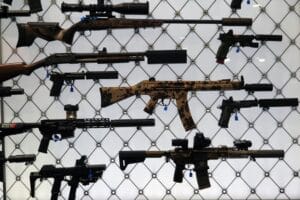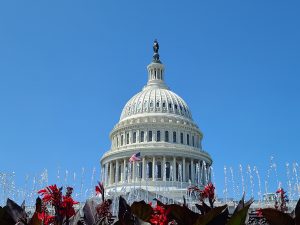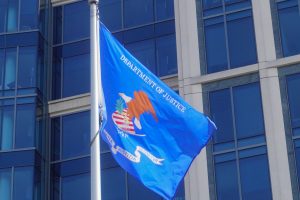The Supreme Court has taken a number of gun cases this year, but not a new Second Amendment case.
That’s the topic that came up on our Q&A podcast this week. We gave our best guess for which case will be the next the Court takes up. Contributing Writer Jake Fogleman did a deep dive into the Snope case and the petitioners’ arguments for why it should be the one to go up.
Then, I take a look at all the news surrounding silencers. I do my best to suss out whether any of it boosts the likelihood we’ll see deregulation anytime soon.
Of course, we answered a bunch of other questions on the podcast. It was a good episode, thanks to the contributions from you guys!
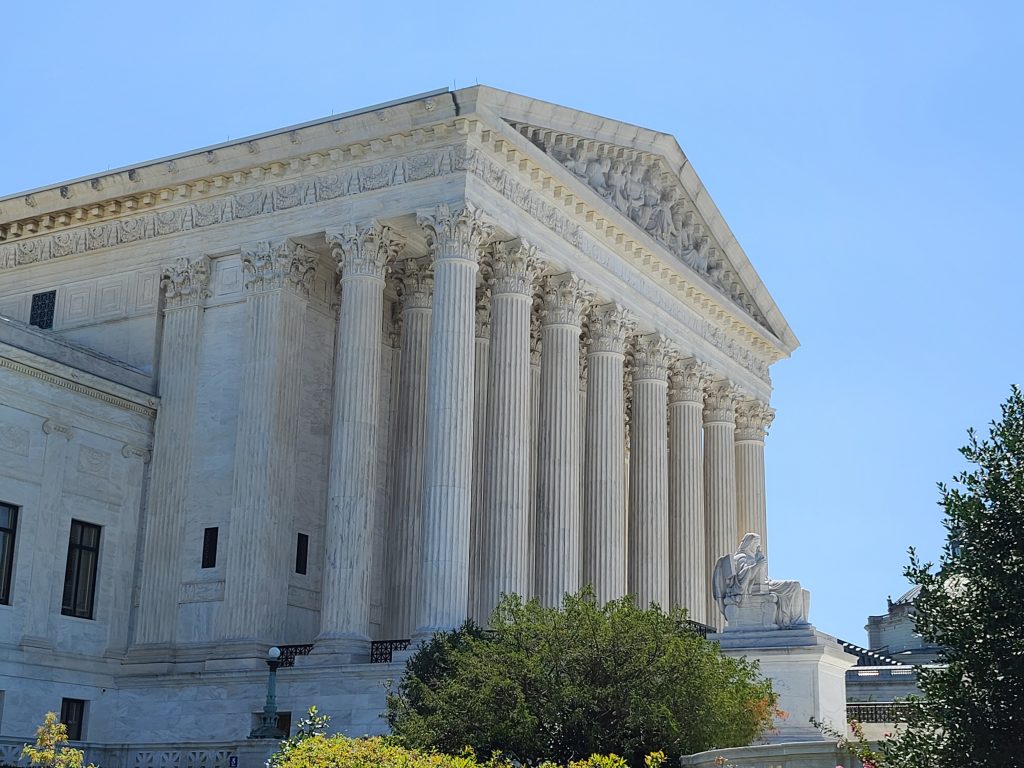
Analysis: Gun-Rights Advocates Make Final Pitch for SCOTUS to Take Up ‘Assault Weapon’ Case [Member Exclusive]
By Jake Fogleman
The ball is officially in the justices’ Supreme Court on whether to decide if AR-15 bans are constitutional.
The petitioners challenging Maryland’s ban on so-called assault weapons filed their final brief asking the Supreme Court for cert on Monday. It responds to Maryland’s argument against taking the case and makes one last attempt to persuade at least four members of the Court that this term is the right time to hear an AR-15 ban case.
“Incredibly, in the sixteen years since Heller every single court of appeals to consider the question has concluded that such bans are constitutional, employing a variety of tests that are uniform only in their failure to adhere to the principles established by this Court,” the petitioners’ reply brief in Snope v. Brown reads. “Maryland asks this Court to deny certiorari to allow even more time for percolation, but enough is enough. The lower courts have proven themselves incapable of following Heller’s clear guidance, and this Court should intervene without delay.”
A day after the petitioners filed the reply brief, the Court distributed the case for its December 13 conference, where the justices will convene and decide which cases to grant and which to reject. That means the Court could issue its order on the Snope case as soon as December 16, though it could choose to re-list the case one or more times before announcing its decision. It also means that the petitioners’ arguments will be the most recent thing on the justices’ minds when doing so.
Maryland’s final brief, filed earlier this month, essentially boiled down to two basic arguments. The first is that the Fourth Circuit faithfully applied the Supreme Court’s guidance in upholding the state’s ban. The second is that it is too early for the High Court to weigh in on the matter, even if it disagrees with the first claim.
“The Fourth Circuit’s decision is faithful to Heller, Bruen, and Rahimi,” the state’s brief reads. “There is no reason why this Court should stray from its usual practice of allowing questions to percolate in multiple courts of appeals, with arguments tested and refined in cases litigated through final judgment on the merits, before granting certiorari.”
The petitioners rejected Maryland’s claim that lower courts deserve more time to develop the relevant Second Amendment caselaw surrounding hardware bans before the Supreme Court intervenes.
“Maryland has argued that this dispute is just beginning to take shape following this Court’s decision in New York State Rifle & Pistol Association, Inc. v. Bruen,” they wrote. “Nothing could be further from the truth.”
Instead, they argued that the question of whether governments can ban firearms that are “in common use by law-abiding citizens” has been an open battle since the Supreme Court decided Heller in 2008. While the petitioners contended that a straightforward reading of the Court’s Heller opinion should invalidate AR-15 bans across the board, they pointed out that federal appeals courts have unanimously ruled the other way under standards of their own creation.
“Remarkably, every circuit to confront the question has (somehow) held that whatever the test for protected arms should be, it should not be the common use test prescribed by Heller and confirmed by Bruen,” the brief reads. “In casting about for some way to sustain bans on common arms, courts have concluded that arms can be banned if they are (in the court’s estimation) ‘particularly capable of unprecedented lethality,’ ‘ill-suited and disproportionate to self-defense,’ or ‘predominantly useful in military service.'”
As a result, they argued that continuing to give the lower courts more time, as Maryland suggests, would be a lost cause and only encourage further legal obfuscation.
“The debate over whether common arms can be banned has persisted in the circuits since Heller, and this Court’s intervention is required to resolve it,” the brief reads. “There is nothing to gain by waiting to see whether additional jurists adopt Heller’s common use test or instead come up with evermore-creative ways to avoid it.”
In addition to the ripeness argument, the petitioners directly appealed to the Court’s role in superintending its past holdings. They argued allowing lower courts to ignore or alter the justices’ landmark gun rulings risks long-lasting distortions to the burgeoning field of Second Amendment jurisprudence.
“Intervention is particularly important because, in the ongoing debate below, the side that to date has always prevailed is also the side that is flouting this Court’s clear teaching in Heller,” the brief reads. “This error results in an ongoing infringement of the fundamental right to keep and bear arms in the states that have made the most popular rifle in America illegal. It also has created a doctrinal mess with far-reaching effects as courts do violence to the Bruen analytical framework to justify what should be unjustifiable.”
As an analogous example, they pointed to the development of various “interest-balancing“ tests in lower courts reviewing gun cases following Heller, even though Heller never relied on such a test. They pointed out that the interest-balancing regime continued until the Supreme Court finally weighed in again on the Second Amendment in 2022 and explicitly rejected it in favor of the text, history, and tradition test. They said a similar dynamic was now at play with arms bans that warranted an immediate cert grant.
“Following Bruen, the skewing of Second Amendment doctrine has continued, it has just been forced into other avenues,” the brief reads. “Several courts, including the Fourth Circuit below, have distorted Heller’s discussion of M-16 rifles to suggest that, contrary to the text of the Amendment itself, arms can be banned because of, not despite their utility to the military.”
They pointed out that, even beyond the Fourth Circuit’s ruling in the Snope case, other circuit courts have used this idea to suggest that AR-15s don’t count as arms under the Second Amendment.
“Something has gone awry when a court’s analysis ends with the conclusion that semiautomatic rifles are not even ‘arms,'” they concluded.
Overall, the reply brief attempts to allay some of the potential concerns the justices may have with taking an “assault weapon” ban case this term. While, in many ways, the Snope case is the best vehicle gun rights advocates have had to date for enticing the Supreme Court to strike down AR-15 bans, one of its only weaknesses as a candidate is simply the fact that it stands alone as the only post-Bruen appeals court merits ruling on such a ban.
Part of that is simply a structural disadvantage based on the geographic sorting of state-level gun bans and the ideological slant of the courts that oversee them–a factor unaddressed in the reply brief–that makes it unlikely a circuit-split will emerge on this issue anytime soon, if ever.
Though the Supreme Court generally prefers to hold off on hearing big constitutional questions until there’s an active controversy between the lower appellate courts, it isn’t a hard and fast rule. The petitioners’ arguments about the real controversy being over how lower courts have distorted Heller since 2008 could be enough to overcome that hesitance.
The Court has already heard or will soon hear two separate gun-related cases this term. Yet, it has not agreed to take up any explicit Second Amendment cases since it decided US v. Rahimi last year. We could find out sometime in December or January whether a Snope grant will soon change that.
Podcast: We Answer Your Questions on Trump, SCOTUS, and More! [Member Early Access]
By Stephen Gutowski
A lot has happened since the last time we did a Q&A episode. So, this week we’re answering Reload Member questions.
Contributing Writer Jake Fogleman joins me in fielding a bunch of different topics. We cover everything from the status of the legal fight over “assault weapons” bans, to what Second Amendment case the Supreme Court might take next, to what Donald Trump’s next administration will look like.
We do our best to give as much insight as possible into where things currently lie and where they’re headed. Reload Members, as always, give us a lot of great questions to work with!
You can listen to the show on your favorite podcasting app or by clicking here. Video of the episode is available on our YouTube channel. An auto-generated transcript is here. Reload Members get access on Sunday, as always. Everyone else can listen on Monday.
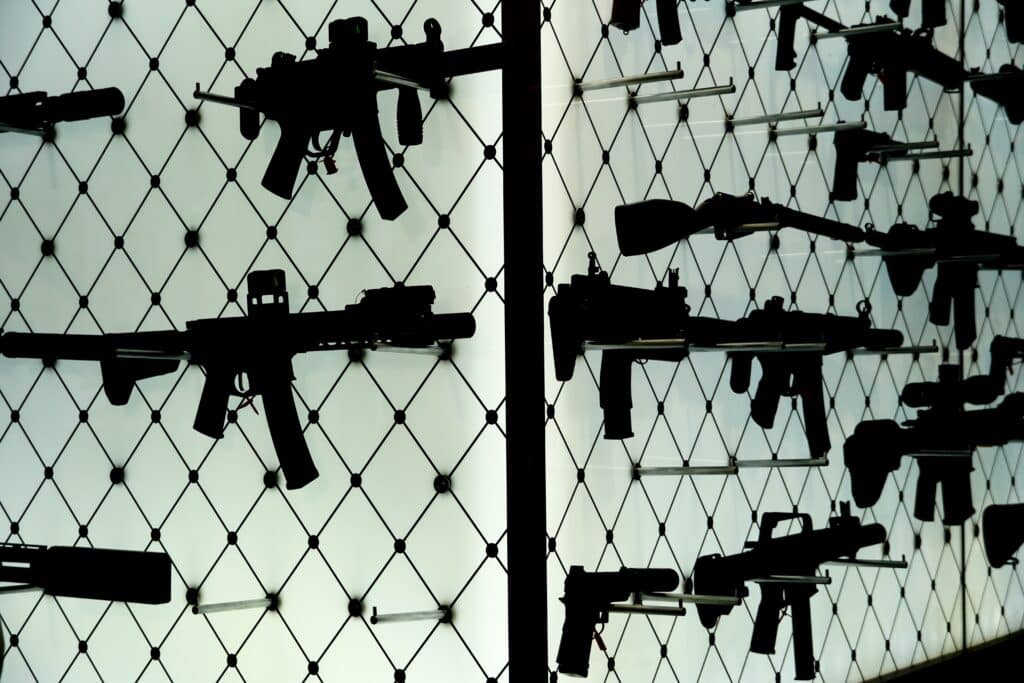
Analysis: Will Silencer Deregulation Happen Soon? [Member Exclusive]
By Stephen Gutowski
Donald Trump won the presidency, the number of silencers in civilian circulation climbed above 4.8 million, and a major medical group just endorsed their usefulness as hearing safety devices. But will any of that translate to silencer restrictions being relaxed in the coming months or even years?
Removing sound suppressors, often called silencers despite not truly silencing the sound of a gunshot, from the purview of the National Firearms Act (NFA) in order to make them easier for the average person to buy has been a top priority of the gun-rights movement for well over a decade now. As things stand now, anyone looking to purchase a suppressor would need to pass an FBI background check, pay a $200 tax to the ATF, and submit a registration of the device as proof of payment. Advocates want to remove most of those steps.
There are several avenues they could take to get to that endpoint. All of them may have received a boost this month with the help of a position statement from a major medical group backing their usefulness in preventing hearing loss.
“Sound suppressors are mechanical devices attached to the barrel of a firearm designed to reduce harmful impulse noise of firearms at its source,” the American Academy of Otolaryngology–Head and Neck Surgery (AAO-HNS) statement reads. “CDC research has shown that ‘The only potentially effective noise control method to reduce [shooters’] noise exposure from gunfire is through the use of noise suppressors that can be attached to the end of the gun barrel.’ Suppressors reduce muzzle blast noise by up to 30 dB.”
So, let’s look at the possibilities for reform and the likelihood they succeed.
The Hearing Protection Act
The highest-profile option for suppressor deregulation is legislation. It’s also the one that’s been the main focus of reform efforts for nearly a decade. Dr. Tim Wheeler, who introduced the AAO-HNS statement, is hoping the group’s new position will help get the Hearing Protection Act through the next Congress.
“It’s purely a scientifically based observation that’s going to be powerful evidence for when the Hearing Protection Act is brought up again,” Wheeler told The Reload. “If you oppose making this useful firearm accessory available to people who can benefit from it, then you are opposing protecting them from hearing loss.”
That could increase support for the bill, which is already the most popular pro-gun legislation. Donald Trump’s backing could help solidify support, especially among Republicans. While he said he’d “seriously look” at banning suppressors after the 2019 Virginia Beach shooting, he has since promised to sign the Hearing Protection Act if it makes it to him.
Still, it’s not clear that will be enough to get it to his desk.
First off, though the backing of the largest ear doctor group helps provide legitimacy to the claim suppressors serve a safety purpose for shooters, the argument isn’t new. After all, the bill that’s been floating around in Congress for years is named after it. And that hasn’t been enough to get it through even one House of Congress to date.
That’s partially because opposition to the bill hasn’t centered on disputing the idea that suppressors reduce the harmful noise produced by gunshots. If anything, the opposition pushes the same argument much further. Gun-control activists mainly argue suppressors are too good at reducing the sound of gunfire.
“The loud and distinctive noise that a gun makes is one of its most important safety features: when people hear it, they realize they may need to run, hide, or protect others,” Everytown wrote in opposition to the bill in 2018. “In mass shootings, being able to hear and identify the gunshots can mean the difference between life and death.”
Additionally, they argue suppressors are unnecessary for hearing protection.
“The gun lobby presents this legislation as an attempt to protect shooters’ hearing, but silencers are not the most effective or the safest way to do so,” Everytown wrote. “Widely available ear protection products work better than silencers to protect hearing and safety—which is why the U.S. military relies on them, not silencers, to protect soldiers’ hearing.”
And, while Trump’s support for suppressor reform could galvanize Republican support, it could do the exact opposite for Democrats. Not that either side really needs much of a push to go in those respective directions, given the increasing polarization around guns in recent years. So, clearing the 60-vote requirement to overcome an inevitable filibuster in the Senate is extremely unlikely.
However, the Hearing Protection Act may not even make it through the Republican-controlled House. After all, it didn’t make it through the Republican-controlled House over the past two years. Nor did it make it through the one Trump enjoyed at the beginning of his first term.
In fact, the latest version of the bill only managed to get 70 cosponsors in the House and 29 in the Senate. That’s not promising for how it will perform in the next Congress, where Republicans will have four more senators but, likely, the exact same number of congressmen.
Even if Republicans were able to frame the bill in a way that would make it fit into the budget reconciliation process, which only requires 50 votes to get through the Senate, they might not be able to get the votes. Although, it would probably depend on how effectively gun-rights advocates could pressure Republicans into siding with them. The bigger hurdle, though, would be in getting Republicans to view the bill as important enough to try and ram through reconciliation.
Another option is to try and paperclip it into a larger, more important bill. The closest the Hearing Protection Act has ever come to passing was back in 2018 when it was part of the Sportsmen’s Heritage And Recreational Enhancement (SHARE) Act before it was derailed by the Las Vegas shooting. Perhaps aiming a bit higher and including it in some kind of must-pass bill could work, but that’s a tall order.
Federal rulemaking or Other Executive Branch Moves
The next possibility is using federal rulemaking or executive orders to change how the ATF enforces NFA suppressor regulations. This is another area where the AAO-HNS’s statement on their use as a safety device could be a justification for changes or reinterpretation.
On the simpler end, Trump could order the ATF to prioritize speedy processing of suppressor registrations to further reduce the time it takes for lawful buyers to obtain the devices. On the more substantial end, he could order them to come up with a new federal rule for silencer enforcement. He might even be able to partially eliminate the tax stamp requirement using a similar amnesty program to the one Joe Biden’s administration employed as an incentive to get Americans to register their pistol-braced guns under one of his rules.
Ironically, though, the Biden Administration’s ATF rulemaking may hinder any effort to reinterpret federal firearms law. Those rules have had a lot of trouble in the lower courts when they feature the ATF making significant departures from how they used to interpret laws that haven’t changed. A radical reinterpretation of suppressor regulations could face stiff opposition in court.
Legal Challenges
The last avenue for removing most of the regulations on suppressors is through lawsuits. The AAO-HNS statement could help convince a judge. However, the recent report from the National Shooting Sports Foundation showing that Americans now own more than 4.8 million might be even more useful for gun-rights activists.
While the Supreme Court hasn’t set a hard number on what exactly constitutes “common use” when determining if an arm is protected by the Second Amendment, 4.8 million is certainly a heck of a lot of suppressors. Justice Samuel Alito estimated there were only about 200,000 stun guns in his concurrence in Caetano v. Massachusetts, where he argued that was enough to reach the common use threshold. So, maybe lower court judges and SCOTUS itself will agree suppressors are in common use and the restrictions on them violate the Second Amendment.
However, challenging suppressor regulations hasn’t been a top priority of gun-rights activists to this point. NFA challenges generally haven’t had much success either. And, in order to have the best shot at winning, a case would probably need a plaintiff who has actually been charged with violating suppressor regulations–a pretty rare charge.
Still, this is also another area Trump and the new GOP Congress could have an impact without even focusing on it. Simply appointing new federal judges who view the Second Amendment similarly to the ones he elevated in his first term will likely make a suppressor suit more viable.
So, it’s not necessarily a slam dunk. But it is an increasingly viable path to undoing suppressor restrictions. It might even be the most viable path.
That’s it for now.
I’ll talk to you all again soon.
Thanks,
Stephen Gutowski
Founder
The Reload




